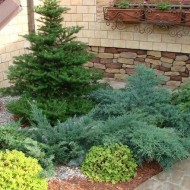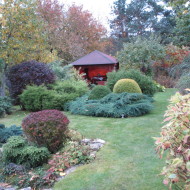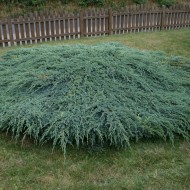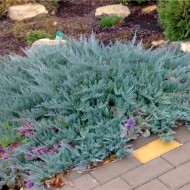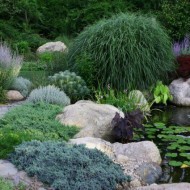Blue Carpet Juniper Growing Guide for Beginners
Content
Description of Blue Carpet Juniper
This juniper variety is popular with the owners because it takes root well and grows well in flower beds, gardens and parks.
Shrub appearance
This plant has the inherent blue color of tough stems and a soft scaly coniferous cover. On the branches there are small bumps that resemble blue berries. The lower branches of the shrub begin to grow straight from the roots, so over the years of development of the juniper, they form a beautiful horizontal green carpet. For this reason, juniper is not afraid of frost.
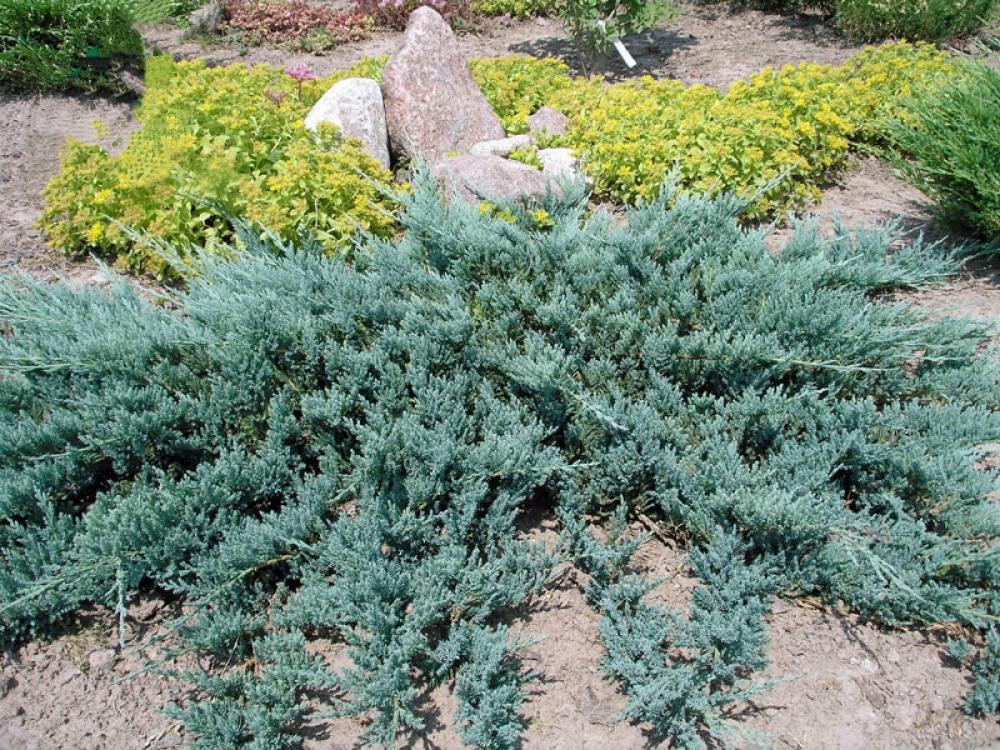
Squamata Blue Carpet exudes a pleasant, specific aroma that can be heard even at a considerable distance. Since the plant secretes phytoncides, this smell is able to destroy pathogenic bacteria and positively affect the condition of the upper respiratory tract. Due to these properties of the juniper aroma, it is always planted in sanatoriums where pulmonary diseases are treated.
Growth rate
This beautiful shrub has a high growth rate. Within one year, the plant can grow in height by almost 80–100 mm. The average height of a bush can be about half a meter.
Winter hardiness and drought resistance
Juniperus Squamata Blue carpet (translated from Latin - scaly juniper Blue carpet) tolerates cold winters quite well, but strong winter winds and frosts can partially damage its needles. Therefore, it is recommended to cover the plant at low temperatures. Drought is also not terrible for these bushes, but in extreme heat, you should take care of moderate watering.
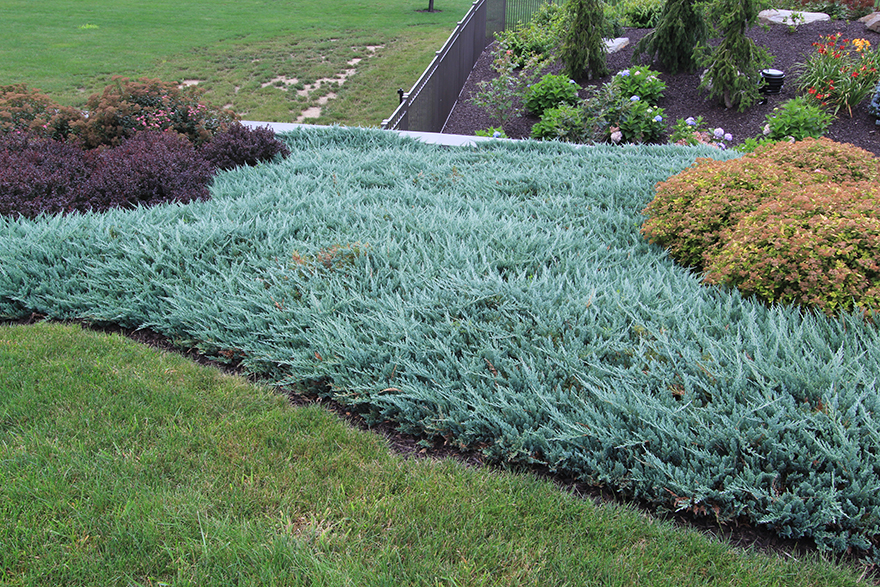
Advantages and disadvantages of the variety
This variety of evergreen shrubs has a number of positive and negative qualities.
- the juniper bush grows rapidly;
- resistant to frost and drought;
- does not require specific care;
- phytoncides released by the plant disinfect the air.
- the bush is picky about the choice of the place of growth;
- heavily brines the surrounding soil;
- the plant is sensitive to weeds.
Video "A Brief Description of Blue Carpet Juniper"
This video provides a brief description of the coniferous culture.
The nuances of planting and proper care for Blue Carpet juniper
In order for the Blue Carpet to successfully take root and delight you for a long time with its appearance and aroma, you need to take into account some of the nuances of caring for this shrub.
Site and soil preparation
This plant prefers well-lit areas - under the bright rays of the sun, it develops quickly and does not get sick. In the shade, the bush begins to lose its clear shape and becomes loose.Therefore, when choosing a planting site, look for areas that are best lit during the day, where there is no shade from buildings and trees.
This variety of juniper grows well on any soil, but it would be preferable to plant it in fertile non-saline soil with a low level of groundwater.
Growing from seeds
Growing from seed is a laborious method, in which it is not always possible to preserve the characteristics of the variety. But if you decide to propagate juniper in this way, you need to do the following:
- Collect juniper cones and place in a warm place.
- When they open, carefully remove the seeds from the fruit of the shrub, being careful not to damage them.
- Destroy the seed coat. This can be done by placing them in a weak acetic acid solution and leaving them there for half an hour. Or remove the peel mechanically by rubbing the seeds between sheets of sandpaper.
- In autumn, place the seeds in boxes with sand and peat, take them outside to improve germination.
- In the spring, fertilize the soil with humus, make two grooves and plant the grown seeds stratified in boxes in them.
- Mulch the planting with a layer of peat or sawdust 1 cm thick.

Planting seedlings
The plant is planted in early autumn. If you want to get juniper seedlings yourself, then the grafting method is used for this. To obtain healthy planting material, you must do the following:
- From an adult plant aged 8-10 years, it is necessary to cut off small annual shoots and remove the lower branches from them.
- Place the resulting cuttings in a mixture of peat and sand, cover with foil and put in a place with moderate lighting. Water the resulting shoots periodically.
- The stalk will be considered ready for planting when roots appear in 1, 5-2 months.
- After 2, 5-3 months, seedlings can be planted in open ground.
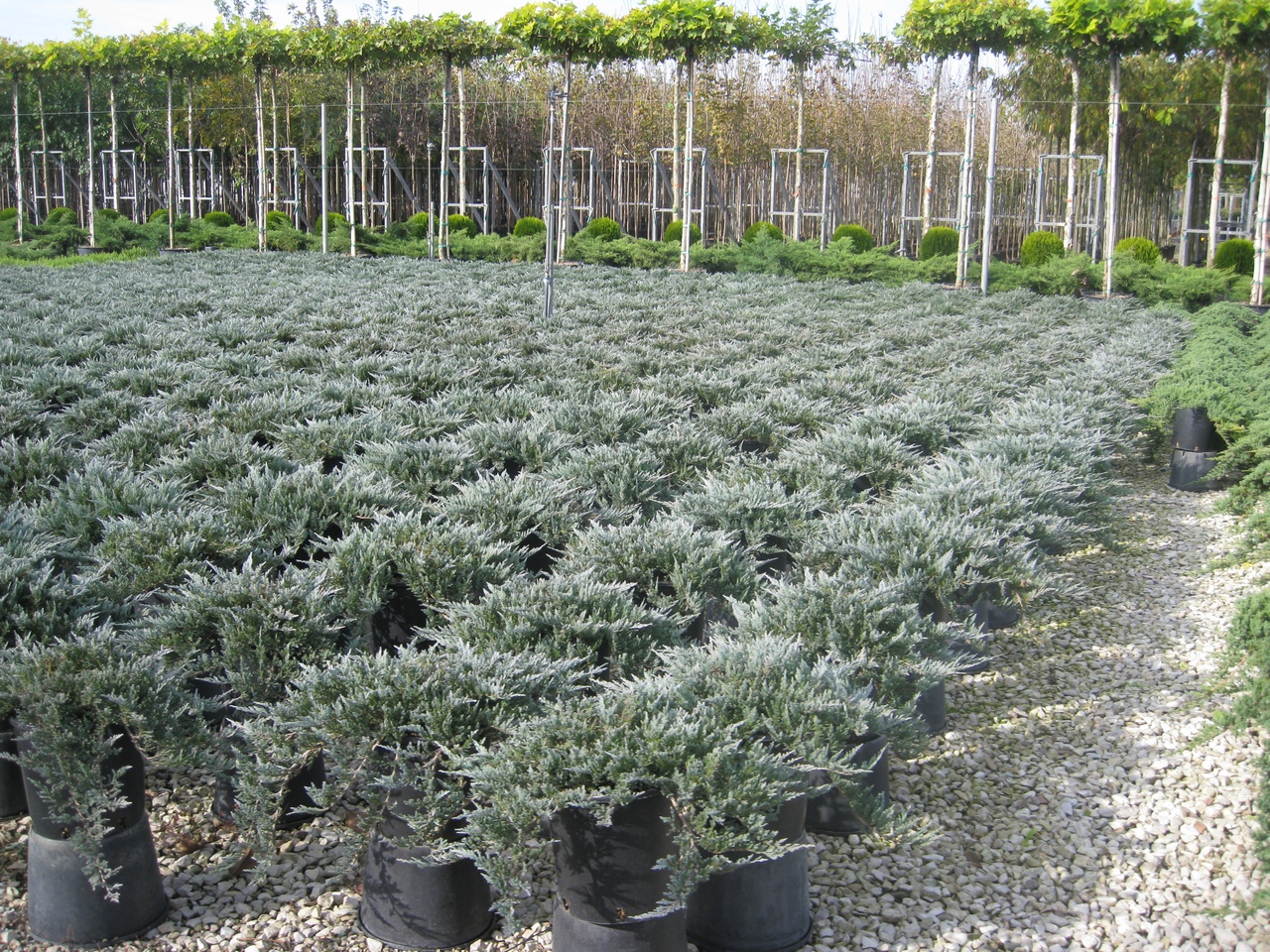
Care features
Plant care is not difficult. The bush must be periodically irrigated with cool water (it is better to do this by the end of the day or in the morning).
The plant needs feeding. To do this, use nitrophosphate fertilizers, which are readily available at your gardening store. Weeds, which can affect the growth of the plant, need to be weeded periodically - this will ensure the best development of the bush.
With the onset of cold weather, you can mulch the Blue Carpet root system with peat or sawdust. This will keep the shrubbery from freezing during the winter. During periods of severe drought and bright sun, you can cover the scaly crown of the plant with dark polyethylene to prevent the needles from burning out.
Diseases and harmful insects
The most common disease that can affect a plant is rust. At the same time, bright red growths appear on the branches of the bush, which lead to the death of the plant. To combat the disease, it is necessary to spray the branches with Arcerida solution 4 times, the course of treatment is 8-10 days.
Drying of the branches may also occur, in which black and brown growths appear on the bark. The branches begin to dry out and fall off. To avoid such a problem, the plant is sprayed with a 1% solution of copper sulfate.
Pests that can infect shrubs are spider mites, aphids and scale insects. To combat them, juniper is treated with Fitoverm, Karate, and Karbofos.
Juniper Blue Carpet in landscape
The shrub adorns flower beds in the plots, looks harmonious in gardens and parks, it is used in the design of squares. A single planting of a juniper bush looks beautiful against the background of a green lawn.You can organize the Blue Carpet composition together with other junipers, as well as with leafy plants. The culture is planted on slopes and alpine slides, as it spreads well.
- Mixed flower bed
- Composite fit
- Coniferous mixborder
- Solitary landing
- Decoration of garden paths
- Growing near reservoirs
The Blue Carpet juniper bush can be safely planted on the site, since it takes root without problems and does not create difficulties in leaving. The area will be clean and tidy, and the air will be filled with a juniper scent.


